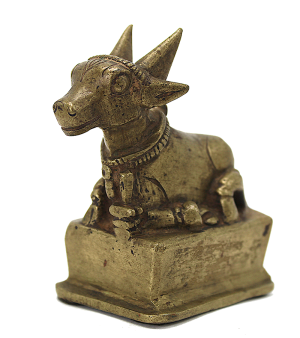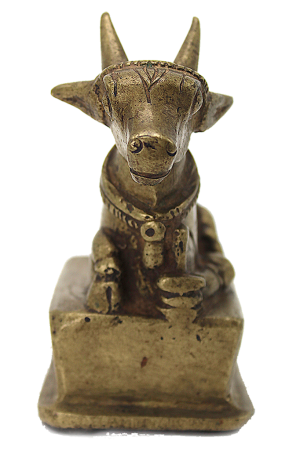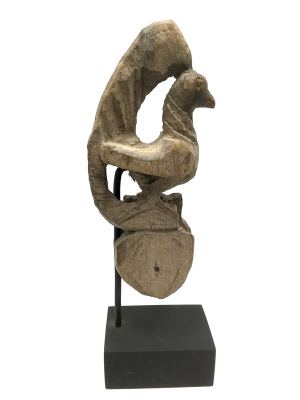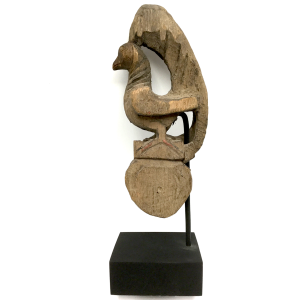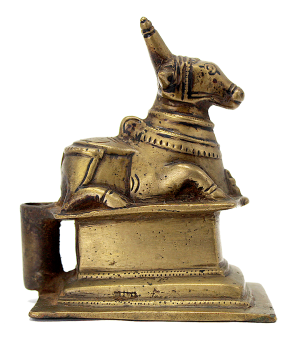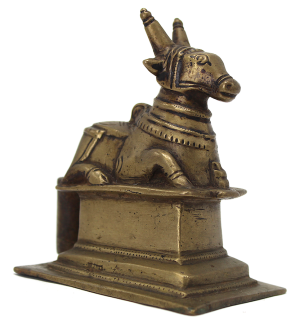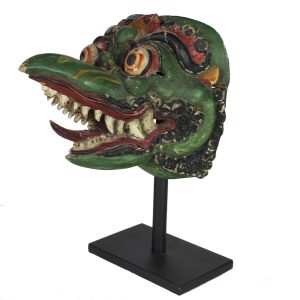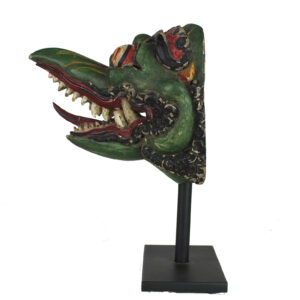-


$155.00
Nandi is among the most frequent Hindu deities worshiped in public places, temples, homes, or on a home altar throughout India. As one of Hinduism’s mythical animals, Nandi is Shiva’s vahana, (his mount that transports him), attendant and leader of his attendants and guardian of all four-footed animals. A recumbent image of Nandi on a…
-
Sale!


$395.00 Original price was: $395.00.$255.00Current price is: $255.00.
H: 3.25” W: 1.375” D: 2.5” | FREE SHIPPING
This small antique brass Nandi is exquisitely handcrafted with a wonderfully aged patina. He sits recumbent on a raised rectangular platform. Delicately incised with decorative details delineating the head, neck, snout and body, his right leg and tail are sinuous, graceful ornaments rather than defining features. His head is at a 45-degree with lyrically curved horns in contrast to most versions with horns extending backwards. This Nandi is based on a South Indian cow whose humpback is emphasized here by two parallel lines covering it as if is part of a saddle or another ornament feature.
-
Sale!


$235.00 Original price was: $235.00.$150.00Current price is: $150.00.
H: 10.5” W: 3.25” D: 2.375” | FREE SHIPPING WITHIN CONTINENTAL U.S. !
This elegant antique heddle-pulley carved from a single piece of Burmese teak is topped by a hamsa, a goose-like bird and a sacred Buddhist symbol of wisdom. Auspicious symbolic animal images are believed protect the weaver, assure quality weaving, and pleases the gods and spirits. It is wonderfully weathered from time and use.
-
Sale!


$265.00 Original price was: $265.00.$165.00Current price is: $165.00.
Ht: 10.625″ W: 3.375″ D: 2.5″|FREE SHIPPING WITHIN CONTINENTAL U.S. !
This elegant antique heddle-pulley carved from a single piece of Burmese teak is topped by a hamsa, a goose-like bird and a sacred Buddhist symbol of wisdom. Auspicious symbolic animal images are believed protect the weaver, assure quality weaving, and pleases the gods and spirits. It is wonderfully weathered from time and use with minor losses with a fine patina. Mounted on a black wood base, this heddle pulley pairs well with item number 11298A.
-


$245.00
Nandi is among the most frequent Hindu deities worshiped in public places, temples, homes, or on a home altar throughout India. As one of Hinduism’s mythical animals, Nandi is Shiva’s vahana, (his mount that transports him), attendant and leader of his attendants and guardian of all four-footed animals. A recumbent image of Nandi on a…
-


$650.00
H: 13.75″ W: 3″. D: 3.75″ | CALL 213-568-3030 OR EMAIL [email protected] FOR SHIPPING.
Rare vintage Balinese mask of Jatayu used in performances of the Ramayana. Jatayu is the Hindu mythical vahana (vehicle) of Vishnu, one of the triad of principal Hindu gods. On a museum quality stand.
End of content
End of content

